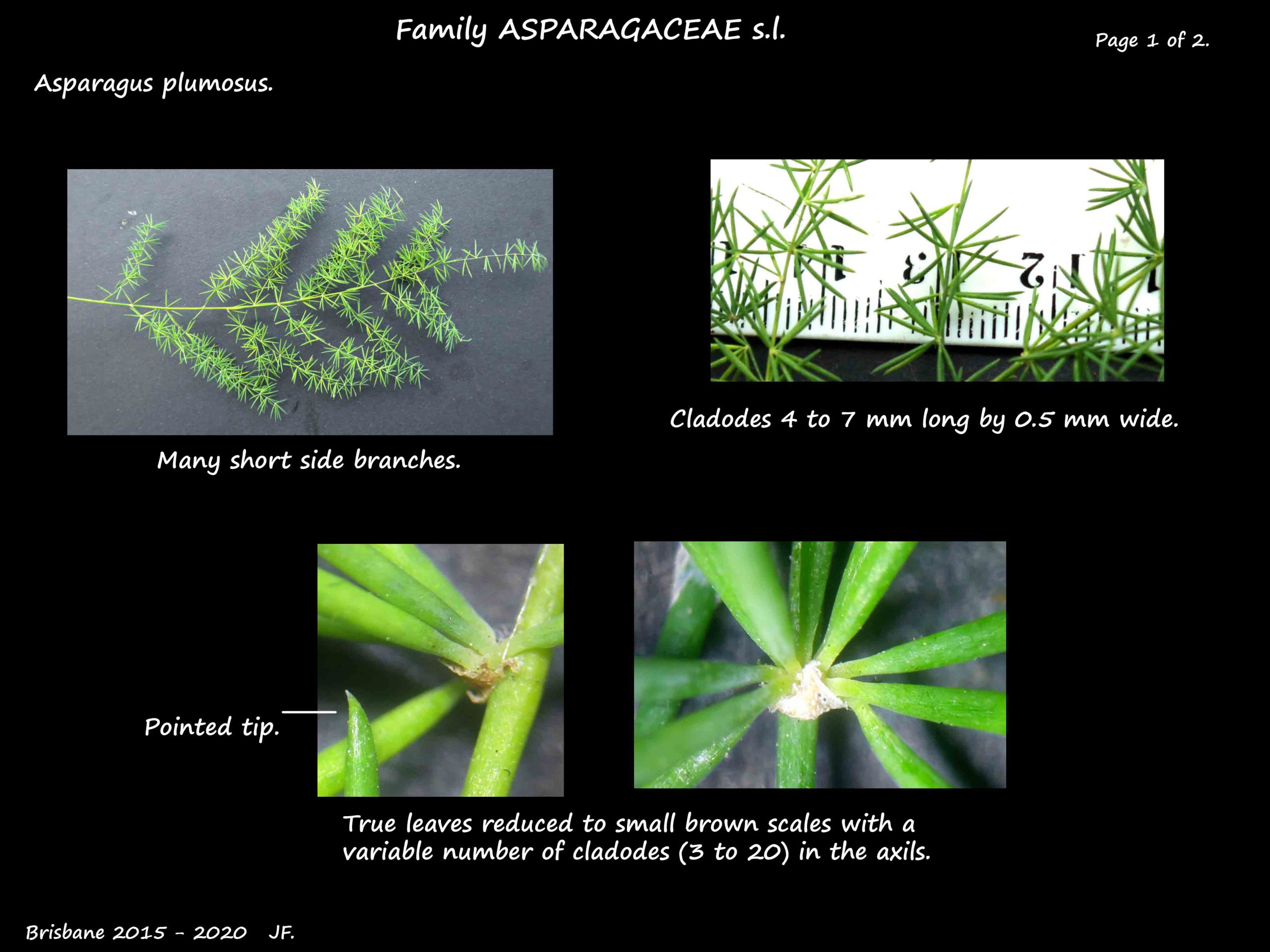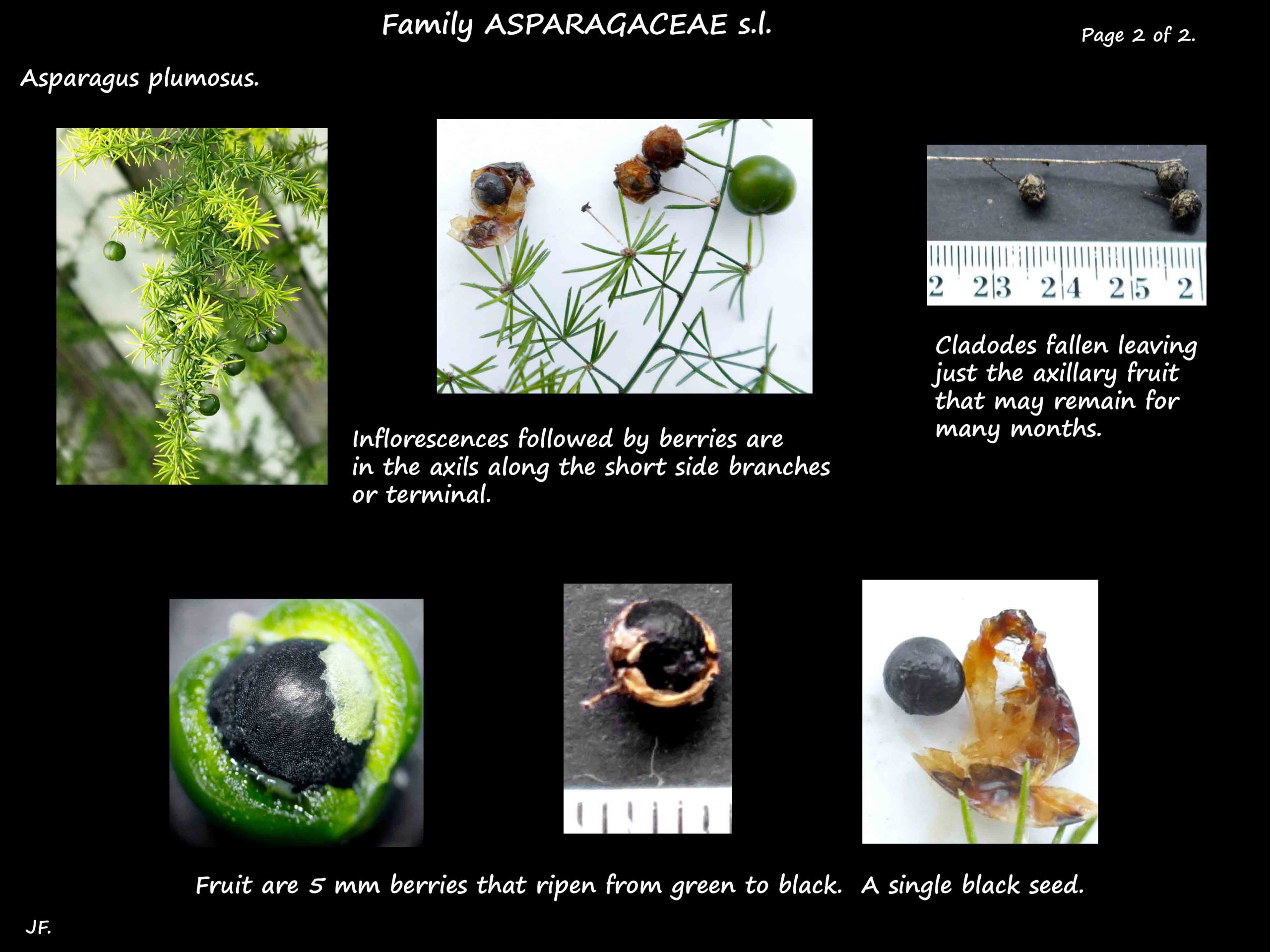Asparagus plumosus.
It is also seen as A. setaceus.
There are 2 common climbing asparagus species in South East Queensland.
A. plumosus has no, or a few scattered spines but A. africanus has them up to 10 mm long.
Cladodes in A. plumosus are 4 to 7 mm long and in A. africanus they are 6 to 15 mm.
A. africanus has flowers in axillary clusters then orange berries.
A. plumosus has solitary or paired flowers followed by black berries.
(The Pom-pom or Ming asparagus fern also has black fruit but inflorescences are clusters.)
Asparagus plumosus.
Climbing Asparagus fern has commonly been used as a garden plant.
Now naturalised it has become a weed in S. E. Queensland.
There are a few varieties and it is used as greenery with cut flowers.
A bushy evergreen climber with stems 1 to 2 m long but with support up to 5 or 6 m.
It can scramble over vegetation or climb using twining stems.
Young green stems become woody and red to brown with age.
The stems have many short side branches.
There are no spines or just a few soft scattered ones.
The true leaves are reduced to small, brown scales.
Bright to dark green cladodes are in clusters of more than 3 and up to 20.
They are around 4 to 7 mm long and 0.5 mm wide.
Inflorescences are 1 or 2 pendulous white flowers about 6 mm across on short stalks.
They are in the axils along the short lateral branches or terminal.
The 6 stamens are around 3.5 mm long.
The 2 mm superior ovary has 3 locules and a 0.5 to 1 mm style with 3 branches.
The 5 mm, roughly round berries ripen from green to deep bluish-black or black.
Each has 1 (2 to 3) black seed/s.
J.F.



